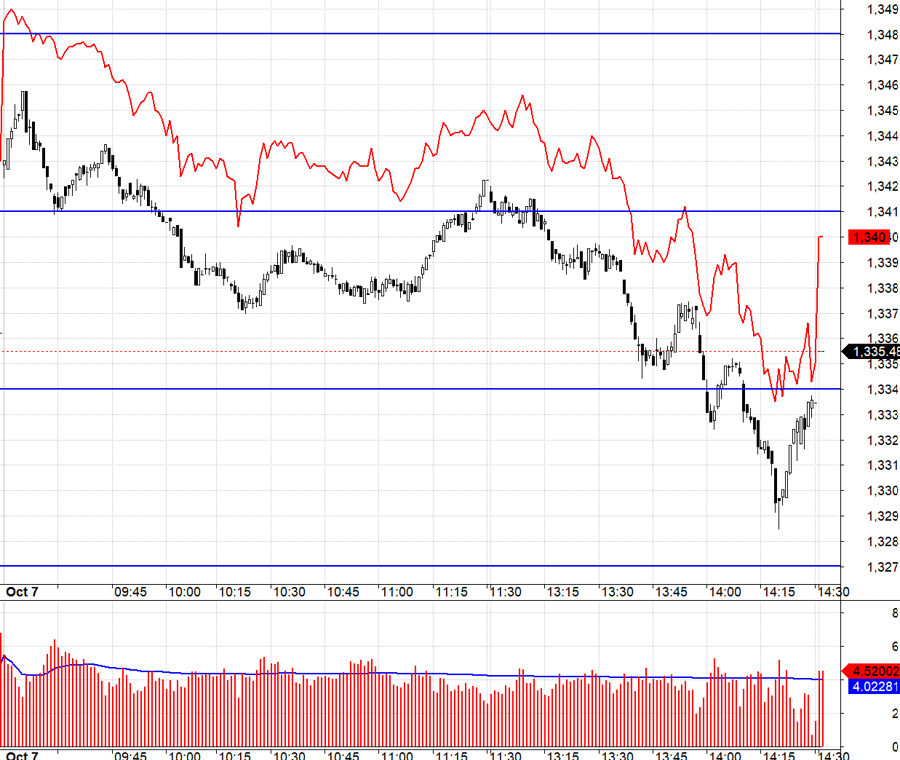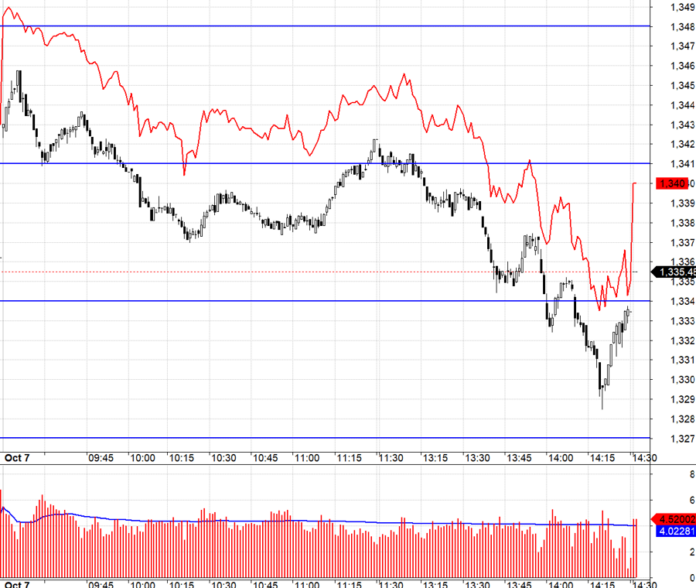Today’s price action was interrupted by the patience of waiting capital, stifling any potential recovery. It was only when prices dipped significantly that larger waiting orders emerged, revealing substantial buying interest at lower levels. The low volume carried over from last weekend’s session, which could be seen as a positive sign as those who wanted to cut losses have likely already done so.
The surprisingly positive macroeconomic data released over the weekend sparked some initial excitement, but the capital flow seemed to disagree, as weak buying pressure quickly led to a fizzling out of the upward momentum. The market is currently in the hands of sellers rather than buyers, and price negotiations will likely continue to create volatile sessions like today’s with low volume until those with capital become more assertive.
Looking at intraday fluctuations, the market is creating a sense of frustration, as any upward movement is met with selling pressure pushing prices back down. Only those holding stocks are feeling discouraged, as those with capital are in a more comfortable position. The market is still in the “test margin” phase and has yet to test investors’ psychology. It will only transition to the bottom-building phase when stockholders become completely disinterested in prices.
Today’s session had two positive notes. Firstly, liquidity: in a downward trend, slow trading after high-volume distribution and sharp declines could indicate either reduced selling pressure or a decrease in loose stock. Today’s matched orders on the two exchanges totaled 11.5 thousand billion, similar to mid-September sessions. Secondly, there were many deep-catching orders placed at the end of today’s session, indicating increased buying interest at lower prices. Some stocks, particularly securities stocks, witnessed impressive reversals, suggesting a shift in the mindset of capital holders.
Trading is always a game of probing each side’s thoughts, and volume, price range, and fluctuations are part of that equation. While guesses can be right or wrong, the likelihood of accuracy increases when multiple signals align over several sessions. Therefore, the process of market bottoming or topping always involves failed fluctuations, rarely concluding within 1-2 sessions.
Some stocks have corrected to attractive buying levels. However, as the market remains unstable, a gradual buying strategy is advisable. Stockholders are at a disadvantage, so patience can be a virtue. Buying on dips is easy, as it simply involves covering previously sold stocks, ensuring everyone gets a piece of the pie without competition.
Today’s futures market continued to reflect expectations of the underlying market, with the F1 basis remaining positive throughout the day. This situation, coupled with low volume, could be tempting for short sellers. However, to increase volatility, they would need to push the underlying market. In the morning session, VN30 dipped below 1341.xx, creating a safe short-selling opportunity, but it was not very profitable as the underlying market remained stagnant, and quick exit before the session ended could even result in a loss. The afternoon session was more favorable, with the second dip below 1341.xx generating more substantial pressure on the underlying market, despite the unchanged basis limiting short-selling profits. VN30 opened up two ranges, from 1341.xx to 1334.xx and then to 1327.xx. However, it is crucial to maintain discipline and close half the position at the 1334.xx threshold to secure profits, with the remaining half aiming for additional gains or breaking even.

Today’s significant drop in volume suggests a decrease in loose stocks. The market is likely to experience a few narrow-range sessions with low volume or sessions with forced openings to test supply. The strategy remains to focus on stock purchases and flexible long/short positions in the futures market.
VN30 closed today at 1335.48. Tomorrow’s resistances are 1341, 1348, 1356, and 1365, with supports at 1333, 1325, 1318, and 1308.
Disclaimer: This “Stock Market Blog” reflects the personal views and opinions of the author and does not represent the views of VnEconomy. The opinions and views expressed are those of the individual investor, and VnEconomy respects the author’s perspective and writing style. VnEconomy and the author are not responsible for any issues arising from the investment opinions and views expressed in this blog.















